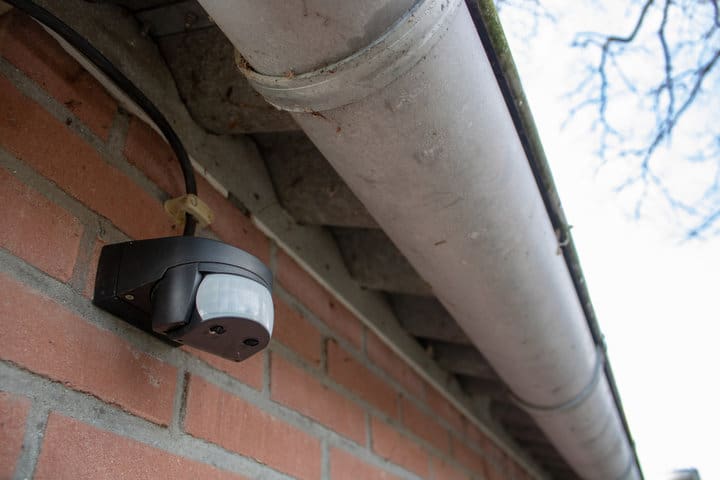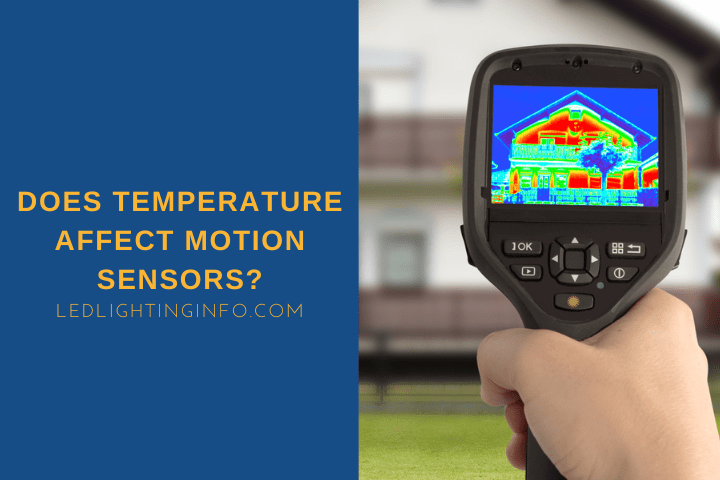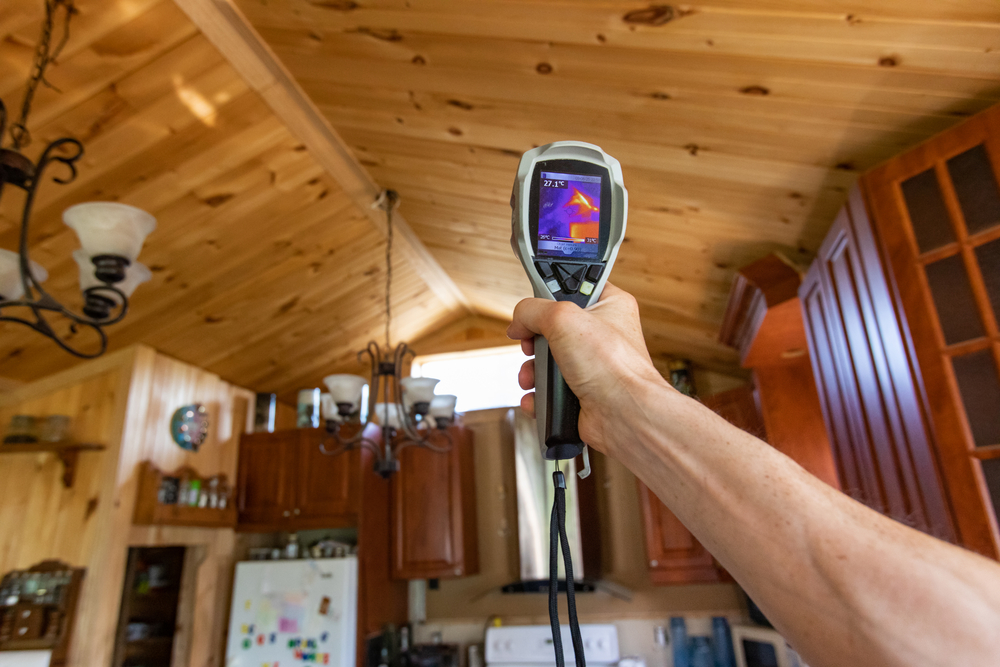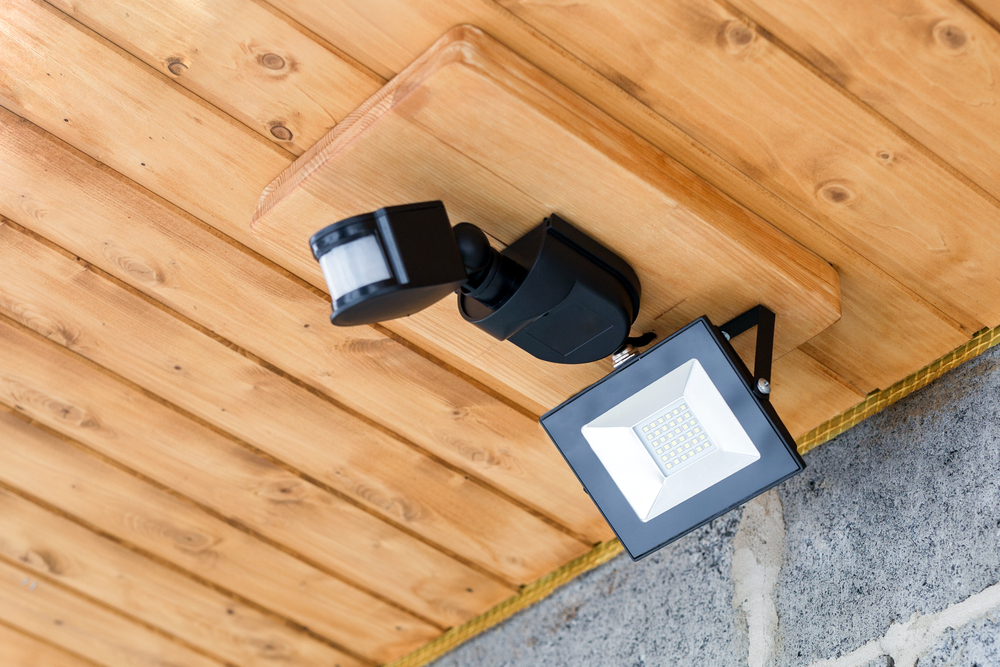The most common type of motion sensor is a PIR sensor – a passive infrared sensor.
This means that it detects ‘motion’ by detecting changes in the infrared heat signals that it can see – such as the body temperature of a person walking into view.
But if it’s relying on the signals given off by heat, how does a motion sensor behave in different climates?
Are they still as effective in hot or cold weather?
PIR sensors can be more sensitive in colder temperatures, as the difference between ambient and body temperature is bigger. On a hot day, they can be less sensitive. However, normally, this isn’t an issue since they’re usually designed for lights that only need to switch on at night when it’s cooler.
Let’s explore this a little more by looking at:
- Whether heat triggers motion sensors
- If cold weather changes how a motion sensor works
- The differences between indoor and outdoor sensors
Does Heat Trigger Motion Sensors?
PIR sensors work by detecting changes in heat.
Living things emit infrared heat signals, so when they detect a sudden change in their field of view of infrared, they know that a new living thing has entered the area. So the sensor is triggered, closing the circuit.
The key here is that it detects changes in heat from infrared.
So, it continuously monitors the background temperature in a space and doesn’t react to that.
Your home or outdoor space isn’t emitting infrared heat even on a warm day.
So in short, background heat doesn’t trigger a motion sensor, but body heat does.
OK, what about a day when the weather is particularly hot?
Does that then trigger a motion sensor?
Again, no, because the sensor isn’t detecting a sudden change in infrared heat.
It is just seeing the same space, although it monitors an area where the temperature is hotter.
This doesn’t trigger the sensor, but actually the opposite – it makes it harder for living things to trigger it instead.
If the ambient temperature is 70 degrees Fahrenheit (21 degrees Celsius) and you walk into the frame with your standard body temperature of 98.6 degrees Fahrenheit (37 degrees C), then your body is significantly different, and so the sensor will have no trouble seeing you.
But what about those days where you live where the temperature reaches maybe 95 degrees F (35 C)?
The sensor will struggle to detect you because your infrared signal closely matches the ambient temperature.
It may only trigger if you get closer and your infrared signal is larger and clearer.
In fact, if the ambient temperature was exactly 98.6 degrees, you’d essentially be completely invisible to the motion sensor.
Isn’t that a pretty big issue with motion sensors? 95 degrees isn’t completely unheard of in some places worldwide and can be frequently reached.
Does that render motion sensors useless in some hotter parts of the world?
Not really – because motion sensors are generally used for triggering lights, which are needed at night.
And there are very few inhabited places in the world that could reach a temperature like that at night.
Do PIR Motion Sensor Lights Work In Cold Weather?

So, now we’ve established that motion sensors struggle in hot weather where it’s close to body temperature. So, how do they cope with the cold?
Actually, very well.
The colder the weather is, the easier it is for a motion sensor to be able to detect a shift in the infrared heat signals in view.
The ambient cold doesn’t prevent the sensor from working. Instead, it just provides a starker contrast when a human or animal walks into view with their body temperature.
In fact, you may find that the sensor becomes too sensitive and that animals that were previously too small to trigger it are causing it to activate the lights.
If your motion sensor has adjustable sensitivity, you might prefer to turn it down slightly during the colder months.
Motion Lights Temperature Sensitivity: Outdoor vs. Indoor
Some PIR motion sensors are designed for indoor use, some for outdoor use, and some can be used in either location.
But when it comes to sensitivity to temperature, there’s no real difference between them.
The most common difference is in the IP (Ingress Protection) rating which tells you whether or not they are sealed against dust and moisture.
Outdoor motion sensors need to be weatherproof, while indoor ones do not.
You might assume that an indoor one can be used outside if covered, but that’s not enough protection.
Even a tiny splash of water could get inside a sensor if it’s not sealed. Then when the temperature does drop, that moisture freezes, expanding and cracking the sensor casing and exposing the actual sensor to the elements, causing all kinds of false triggers.
Sensors rated for indoor use only will likely have an IP20 rating, while those for outdoor use will be rated IP44 or better.
If the main difference is in waterproofing, why are some sensors rated for outdoor use only? Surely you could use them indoors?
Well, you could, but these sensors tend to come with built-in dusk to dawn sensors, which means they react to the ambient lighting and only activate when it’s dark.
Indoors, you’re more likely to put a light on in the evening, rendering the sensor unsuitable.
One final point on indoor and outdoor sensors regarding temperature – indoor sensors tend to be more consistent in how they work because we naturally keep the inside of our homes at a more consistent temperature.
Whether heating rooms during the winter or switching on the AC during warmer months, the indoor temperature stays typically within a smaller range.
Outdoor sensors are less consistent, working more effectively in the colder months and less effectively during temperature spikes if you live somewhere with hot summers.
Final Words
PIR motion sensors aren’t usually affected by the temperature, and when they are, it’s not often an inconvenience.
They work a little better in cold weather, although this can cause a few extra false triggers.
While they’re less effective in hot weather, the temperature has usually dropped by the time you want the sensor to trigger any outdoor lights in the evening.
Do you live somewhere where the temperature gets really cold or hot?
Have you noticed any changes in how your motion sensors behave during more extreme temperatures?



